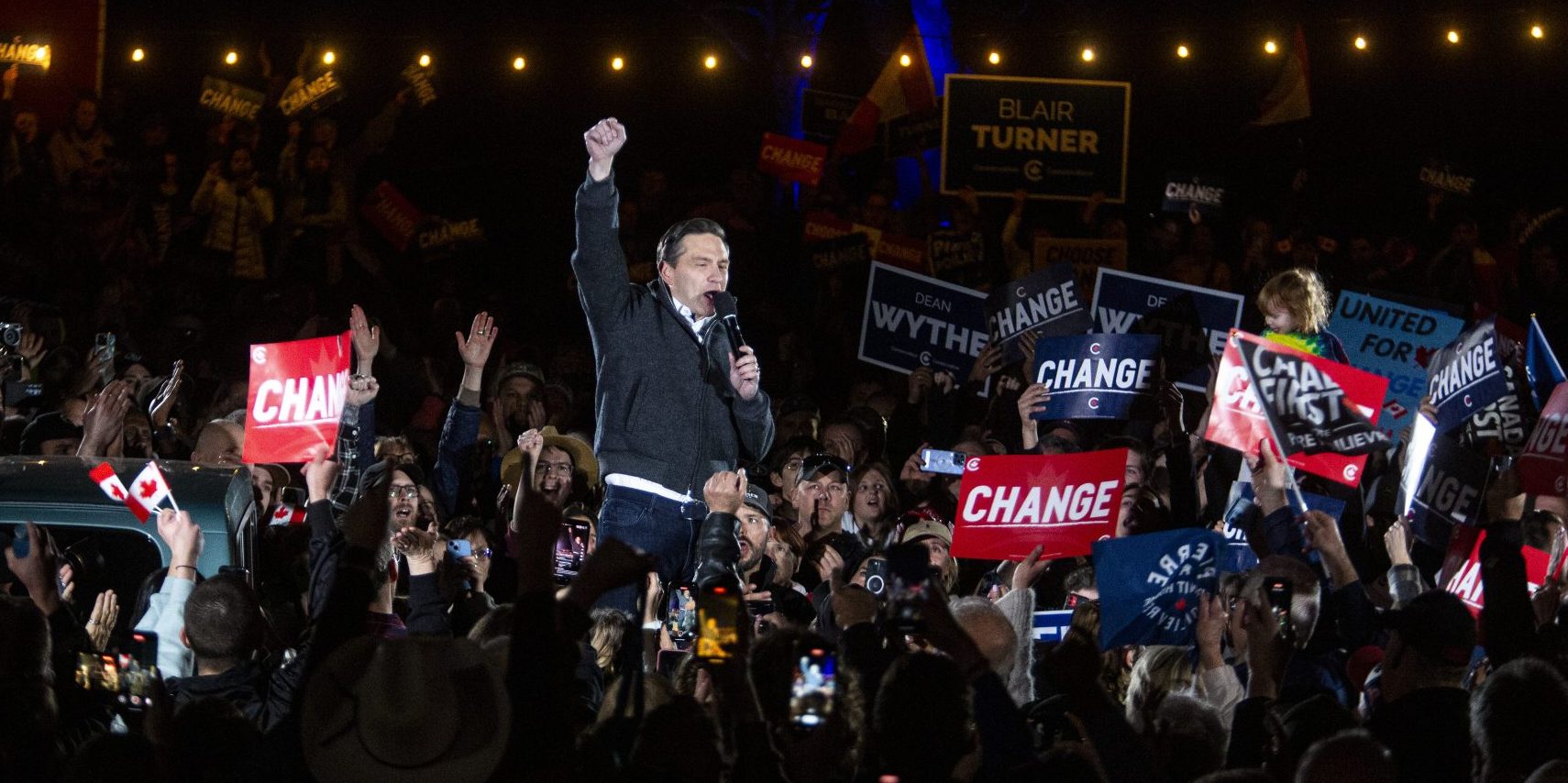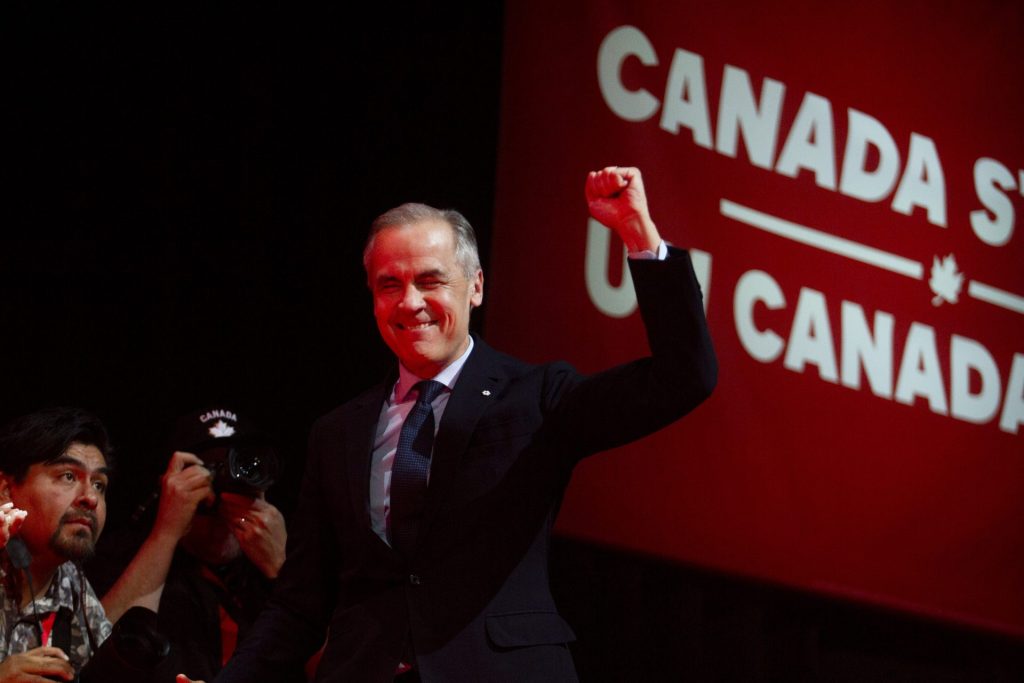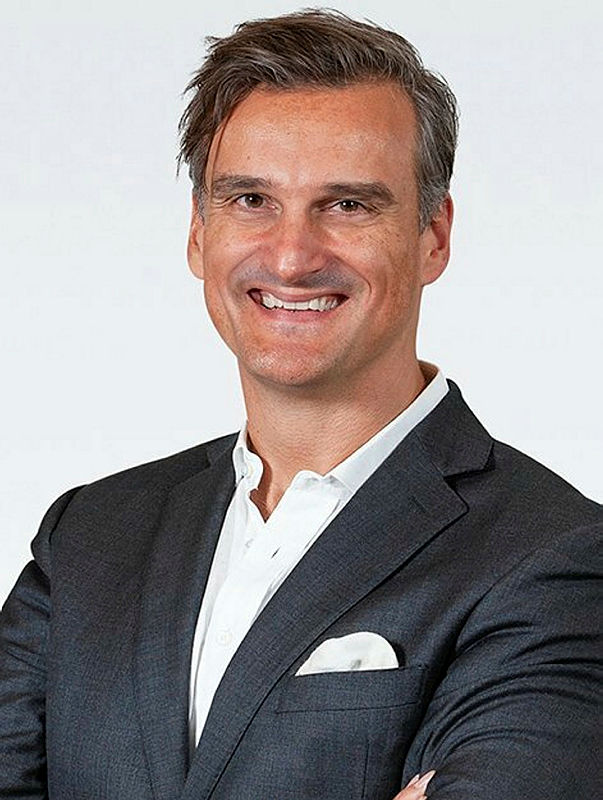‘Feeling forgotten’ and ‘left behind’: why more young men are voting Conservative

In a historic flip in trends, gen-Z voters overtook baby boomers in Conservative support this election, according to multiple voter intention surveys and early exit polls. Boomers, who typically vote blue, flocked to the Liberals in response to the ballot-box question of tackling United States President Donald Trump, whereas voters under the age of 30—specifically males—shifted to the Conservatives, pointing to an emerging generational and gender divide among Canada’s youngest voting demographic.
This trend is not unique to Canada. Young men are increasingly backing right-wing parties in developed nations across the globe. One of the most notable—and close—examples of this is in the U.S: in the 2024 presidential election, 51 per cent of male voters under the age of 30 voted for Republican candidate Donald Trump. That number represents an increase of 15 per cent from the 2020 U.S. election, and is 15 points higher than among young women of the same age.
“The gap between the men and women on who they were voting for was rather negligible for older generations, but for that 18 to 29-year old-cohort, there were some pretty sharp divides,” in Canada, said Oksana Kishchuk, director of strategy and insights at Abacus Data, a polling firm that has been tracking these trends.
The polling firm placed men under 30 years old as the most likely age group to report Conservative voting intention. A March poll from the same firm found that 41 per cent of men under the age of 30 backed the Conservatives, but only 23 per cent of women of the same age responded with the such support. A similar poll by Abacus Data from just before the 2021 election is markedly different: 27 per cent of young men polled said they planned to vote Conservative, whereas 29 per cent of young women polled did.
“That real split that I think we’ve heard anecdotally does seem to be true and popping up—and especially and only among younger Canadians, not in those older age brackets,” she said.
Similar gender-split trends are also being observed in some countries in Europe and in South Korea where younger men are increasingly moving to vote in favour of right-wing populist parties.
While final voter turnout rates and demographic breakdowns are not yet available for Canada’s recent federal election, preliminary results and voter intention polls report a similar split here, too.
A generational divide
Some of the increase in Conservative support among young men can be attributed to split voting priorities across age demographics.
Boomers were more concerned about responding to Trump this election, with 56 per cent of them listing it as their primary voting priority, according to polling by Abacus Data. But young voters were motivated by change—57 per cent of them listed it as their voting priority.
One poll from April 27 found that only 18 per cent of gen-Z voters listed Trump as their primary voting priority, despite it being a dominating ballot-box question for many older voters and an issue on which now-Prime Minister Mark Carney (Nepean, Ont.) centred his campaign.

This difference in voting priority is starkly split down party lines. Seventy-five per cent of Conservative voters saw the election through a perspective of change, whereas the majority of Liberals—68 per cent—saw the election through a Trump lens.
This led to the Liberals collecting the most support among voters over the age of 60, boosting their support amongst boomers by 19 points from 2021.
Is social or fiscal conservatism driving support?
Yaroslav Baran, a Conservative strategist and co-founder of the communications firm Pendulum, said this comes down to different economic realities. Younger voters are faced with the reality of navigating the housing and job market, he said, which are “daily concerns” that don’t impact boomers to the same degree.

“I think a lot of younger voters thought of it as a luxury of the past to be able to worry about Donald Trump,” Baran said. “‘I’m just trying to put bread on my table. I’m trying to feed my family. I’m trying to pay the rent.’”
Kishchuk agreed with this assessment, but added that while younger voters as a whole are motivated by change, young men are more likely to vote on economic issues, which could partly account for the gender split among generation Z.
She also pointed to a broader trend—not just in Canada—of “men feeling forgotten and sort of left behind in a lot of the conversations” on the topic of social issues, highlighting that this may be driving young men who feel their voice is “not being captured as much” to adopt socially Conservative values.
This sentiment is something on which Conservative Leader Pierre Poilievre capitalized during the election, making a concerted push to target what he called “woke ideology” on the campaign trail, often using the word to criticize Liberal policies.
In his official Quebec platform, which was released on March 26, about a month before the election, Poilievre vowed to “put an end to the imposition of woke ideology in the federal civil service and in the allocation of federal funds for university research,” and it was later included in the party’s full platform released just six days before election day.
Social media’s role, and a young political memory
Another driving factor behind the uptick in support for the Conservatives amid younger demographics is that younger voters have no memory of a pre-Trudeau Liberal Party, and limited recollection of a Conservative government being in power, said Dennis Pilon, a professor and chair of political science at York University.
“People looking for an alternative—young people—don’t know anything, really, about the Conservative Party,” he said. “They don’t know that a lot of what Poilievre is promising is the same thing Conservatives always promise, a kind of a miracle policy mix where somehow lowering taxes for everyone will somehow provide … even more services than we have now.”
Pilon also said that there is a need to be cautious about how to frame the reason behind the increased support, pointing to the Conservatives’ success in targeting the voter base through online advertising.

“The way the story is being crafted is we’ve got a bunch of angry young men who are turning to the Conservative Party because they’re mad as hell,” Pilon said. “But another view says that the Conservative Party is proving to be more successful in our new media environment at reaching different groups of voters.”
Kishchuk made a similar observation, pointing out that the party tailored its ads to various platforms to target different demographics, specifically speaking to young men in their ads on social media platforms like YouTube and Instagram.
“I received an ad from the Conservative Party [on Instagram] about … access to vaping products in convenience stores,” she told The Hill Times. “It wasn’t something that anyone campaigned on. It’s not a big campaign promise, but I think they were really trying to tailor and target and tap into young men, which I think became a key part of their sort of vote coalition in this election.”
Polievre also sparked some criticism when he sat down during the election campaign with controversial psychologist and right-wing media commentator Jordan Peterson for a YouTube interview—a platform that skews young and male.
But Baran pointed to Poilievre’s image as a key factor driving the leader’s support with the demographic.
“Younger voters would have a look at Pierre, his family, his wife and children, and saw themselves in it,” Baran said. “That’s me right now … or that’s me in a couple years, and this guy understands my anxieties. I think that’s a key part of it.”
ewand@hilltimes.com
The Hill Times






 LICENSING
LICENSING PODCAST
PODCAST ALERTS
ALERTS













